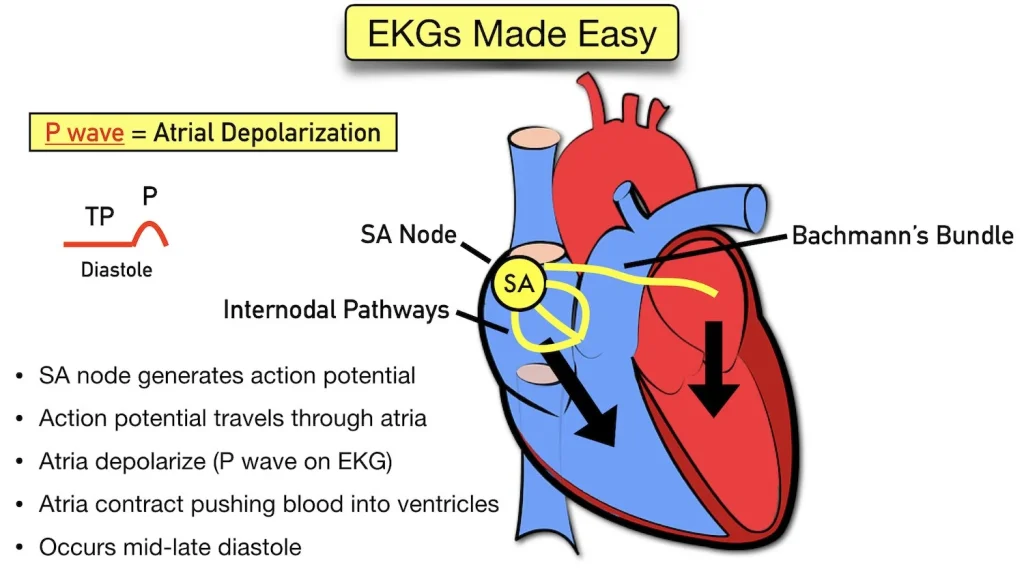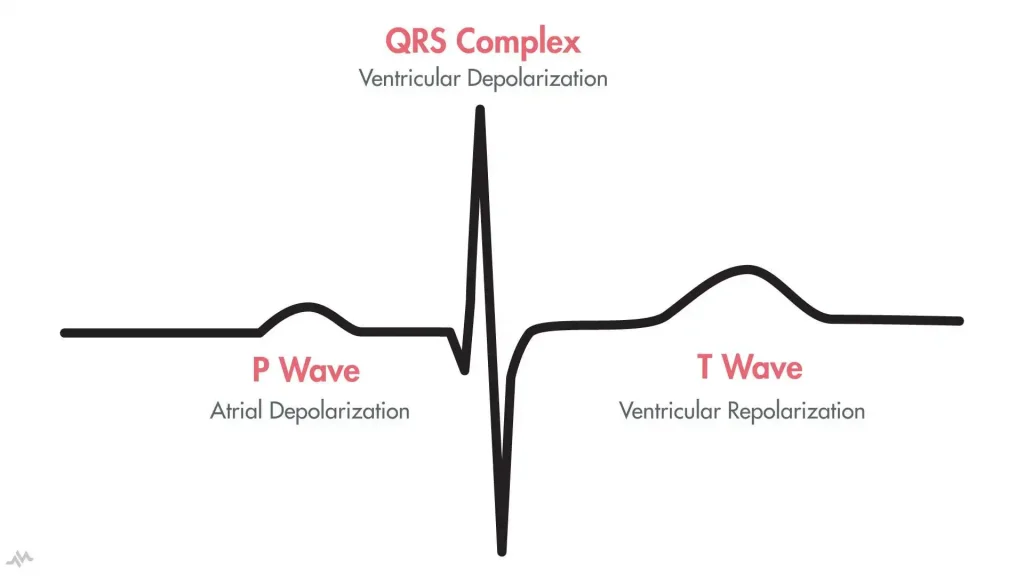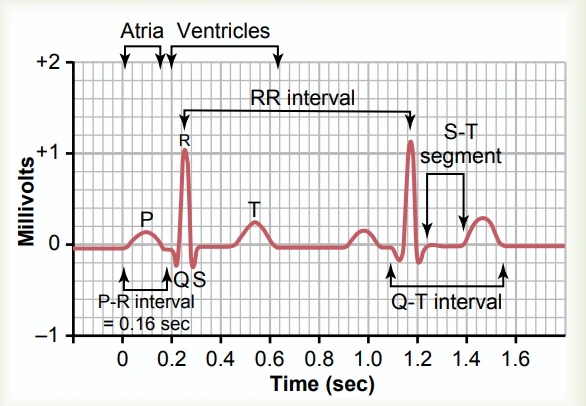Table of Contents
Atrial Depolarization EKG: Illuminating the Heart’s Electrical Activity
The human heart, a marvel of engineering, beats tirelessly to keep us alive. But have you ever wondered how it orchestrates this rhythmic symphony? Enter Atrial Depolarization EKG, a crucial element in understanding the heart’s electrical activities. In this comprehensive article, we will delve into the intricacies of atrial depolarization and its role in the electrocardiogram (EKG).

P Wave: The Prelude
P-wave: The First Musical Note
At the heart of the atrial depolarization process lies the P-wave. Imagine the conductor raising their baton before an orchestra’s performance. The P-wave represents the electrical impulse’s initiation in the sinoatrial (SA) node, the natural pacemaker of the heart. This small upward blip on the EKG graph signifies the depolarization of the atria—their preparation to contract.
P Wave Represents: Atrial Activation
The P-wave represents the synchronized contraction of the atria, pushing blood into the ventricles. It’s like a harmonious prelude before the main act, setting the stage for the ventricles to follow suit.
Ventricular Depolarization: The Heart’s Crescendo
Ventricular Depolarization: The Crescendo of Heartbeats
As the P-wave concludes, the atrial depolarization hands over the baton to the ventricles. This transition is depicted as the QRS complex on the EKG. It’s the heart’s crescendo, where the ventricles contract forcefully to propel blood into the pulmonary and systemic circulation.
What Do P Waves Represent?
What Do P Waves Represent?: Key to Understanding the Heartbeat
P-waves represent the electrical signal generated in the atria. This signal initiates atrial contractions, resulting in the expulsion of blood into the ventricles. They are a visual representation of the heart’s preparation for the next phase of its rhythm.
P Wave ECG: Capturing Electrical Poetry
P Wave ECG: Capturing Electrical Poetry
The P-wave’s depiction on an EKG paper is akin to capturing the essence of a musical note on sheet music. This graphical representation helps cardiologists analyze the heart’s electrical activities and detect irregularities, ensuring the heart’s rhythm is in perfect harmony.
Atrial Repolarization: The Silent Finale
Atrial Repolarization: The Silent Finale
Atrial repolarization, which precedes the contraction of the ventricles, occurs after atrial depolarization. While this event doesn’t have its designated spot on the EKG, it’s like the momentary hush in a symphony before the final crescendo.
Atrial Depolarization EKG: The Dance of Electricity
Atrial Depolarization EKG: The Dance of Electricity
In the world of cardiology, the Atrial Depolarization EKG is akin to a mesmerizing dance of electricity. It reveals the heart’s electrical patterns, allowing medical professionals to diagnose and treat various cardiac conditions.
Deciphering the EKG Graph
Deciphering the EKG Graph: Reading Between the Lines
To understand the atrial depolarization EKG, you must learn to decipher the EKG graph. Each wave, spike, and pause has significance, akin to notes and rests in a musical composition. Here are some essential points to consider when reading an EKG:
- P Wave: Represents atrial depolarization.
- QRS Complex: This signifies ventricular depolarization.
- T Wave: Represents ventricular repolarization.
- PR Interval: Indicates the time between atrial and ventricular depolarization.
The Role of the SA Node
The Role of the SA Node: Conductor of the Heart’s Symphony
The Sinoatrial (SA) node, often referred to as the heart’s natural pacemaker, plays a pivotal role in atrial depolarization. This small cluster of cells initiates the electrical impulse that leads to the P-wave, kickstarting each heartbeat.
Atrial Depolarization and Heart Health
Atrial Depolarization and Heart Health: Keeping the Rhythm in Tune
Understanding atrial depolarization is not only fascinating but also crucial for maintaining heart health. An irregular atrial depolarization pattern can be a sign of atrial fibrillation, a common arrhythmia that requires medical attention.
The Atrial Depolarization Sequence
The Atrial Depolarization Sequence: Following the Electrical Footprints
Atrial depolarization follows a precise sequence:
- SA Node Activation: The SA node initiates the electrical impulse.
- Atrial Contraction: The impulse spreads through the atria, leading to atrial contraction (P-wave).
- AV Node Delay: There’s a momentary delay at the atrioventricular (AV) node, allowing the ventricles time to fill with blood.
- Ventricular Contraction: The impulse then travels to the ventricles, causing ventricular depolarization (QRS complex).

Atrial Depolarization Disorders
Atrial Depolarization Disorders: When the Rhythm Falters
Atrial depolarization disorders can disrupt the heart’s rhythm. These may include:
- Atrial Fibrillation (AFib): Characterized by irregular and rapid atrial depolarization, leading to an irregular heartbeat.
- Atrial Flutter: A more organized, yet still abnormal, atrial depolarization pattern.
- Supraventricular Tachycardia (SVT): Rapid atrial depolarization leading to a fast heartbeat.
FAQs
Q: What causes abnormal atrial depolarization?
A: Abnormal atrial depolarization can result from various factors, including heart diseases, high blood pressure, and even stress.
Q: Is atrial depolarization the same as atrial contraction?
A: Atrial depolarization triggers atrial contraction, but they are not the same. Depolarization refers to the electrical activation, while contraction is the physical response.
Q: Can I feel atrial depolarization?
A: No, you can’t feel atrial depolarization. It’s a purely electrical event that precedes the physical sensation of your heartbeat.
Q: How is atrial depolarization measured?
A: Atrial depolarization is measured through an EKG, which records the electrical activity of the heart.
Q: What happens if atrial depolarization is irregular?
A: Irregular atrial depolarization can lead to arrhythmias like atrial fibrillation, which may require medical intervention.
Q: Can lifestyle changes improve atrial depolarization?
A: Yes, adopting a heart-healthy lifestyle, including regular exercise, a balanced diet, stress management, and avoiding smoking, can positively impact atrial depolarization and overall heart health.
Also Read: Is Left Axis Deviation ECG Dangerous?
